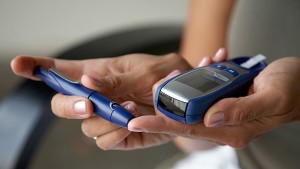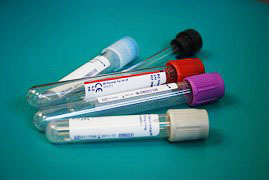New Survey Shows Americans Take Steps to Fend Off Colds and Flu
According to the Centers for Disease Control, common colds and flu are the main reason adults miss work. While a cold can be severe, the flu can be life threatening since more than 20 0,000 people are hospitalized each year for seasonal flu-related complications. In the midst of cold and flu season, Americans are taking action to avoid getting sick, according to the 2016 Healthy Hand Washing Survey conducted by Bradley Corporation.
0,000 people are hospitalized each year for seasonal flu-related complications. In the midst of cold and flu season, Americans are taking action to avoid getting sick, according to the 2016 Healthy Hand Washing Survey conducted by Bradley Corporation.
The Healthy Hand Washing Survey queried 1,062 American adults online about their hand washing habits in public restrooms and concerns about germs, colds and the flu. Participants were from around the country, were 18 years and older, and were fairly evenly split between men and women (47 and 53 percent).
“This time of year, we’re surrounded by family, friends and co-workers who are sick or may be getting sick. That’s why it’s so important to realize the first defense against illness is to remove germs and viruses from our hands by washing frequently and vigorously,” says Jon Dommisse, director of global marketing and strategic development at Bradley Corp.
The survey found that 71% of adults always make it a point to wash their hands after handling a sick child. Hand washing with soap is needed
when coming in contact with a sick individual in order to avoid the risk of contracting an illness yourself. The research has shown virus particles can
travel up to 12 feet through the air when someone coughs or sneezes. The study showed that human influenza viruses generally can survive on surfaces for two to eight hours.
“Flu viruses can be highly contagious and can be transferred to your hands by touching surfaces or things that have been contaminated,” says Dommisse. “When there’s an outbreak, it’s essential to step up your hand washing diligence.”
The survey specifically asked respondents about their hand washing behavior in public restrooms since germs from many different sources
can be found in those locations. The survey found that 40% of Americans don’t increase their hand washing during seasonal flu outbreaks.
A New Study On Fat-tissue Hormones Finds Possible Connection to Type 2 Diabetes
 A new study by researchers from Harvard T.H. Chan School of Public Health and colleagues describes the pre-clinical development of a therapeutic that could potentially be used to treat type 2 diabetes, fatty liver disease, and other metabolic diseases. The researchers developed an antibody that improves glucose regulation and reduces fatty liver in obese mice by targeting a hormone in (fat) tissue called aP2 (also known as FABP4).
A new study by researchers from Harvard T.H. Chan School of Public Health and colleagues describes the pre-clinical development of a therapeutic that could potentially be used to treat type 2 diabetes, fatty liver disease, and other metabolic diseases. The researchers developed an antibody that improves glucose regulation and reduces fatty liver in obese mice by targeting a hormone in (fat) tissue called aP2 (also known as FABP4).
“The importance of this study is; first, demonstrating the importance of aP2 as a critical hormone in abnormal glucose metabolism, and secondly, showing that aP2 can be effectively targeted to treat diabetes and potentially other immunometabolic diseases,” said Gökhan S. Hotamisligil, J.S. Simmons Professor of Genetics and Metabolism and chair of the Department of Genetics and Complex Diseases and the Sabri Ülker Center at Harvard Chan School.
The increase in adipose tissue characteristic of obesity has always been linked to metabolic diseases such as type 2 diabetes and cardiovascular disease. Recently, it has been discovered that the tissue itself plays an important role in metabolic disease, by releasing hormones which act in distant sites such as the liver, muscle, and brain that affect systemic metabolism. Work from the Hotamisligil lab previously identified the protein aP2 as a critical hormone mediating communication between adipose tissue and liver. Since aP2 levels are significantly increased in humans with obesity, diabetes, and atherosclerosis, and mutations that reduce aP2 result in significantly reduced risk of diabetes, dyslipidemia, and heart disease, strategies to modify aP2 function carry promise as new lines of therapeutic entities against these common and debilitating chronic diseases.
The work is the study is a collaboration on immunometabolism between the biopharmaceutical company UCB and a team of researchers led by Hotamisligil and lead author M. Furkan Burak, a former Hotamisligil lab member and currently a resident in internal medicine at Mount Auburn Hospital, Cambridge, MA. Coordinated by Harvard’s Office of Technology Development (OTD), the collaboration successfully twins UCB’s world-class expertise in monoclonal antibody discovery with Hotamisligil’s insight and experience in aP2 biology. In the new study, Burak and colleagues describe the development and evaluation of novel monoclonal antibodies targeting aP2. The team found that one of these antibodies effectively improved glucose regulation in two independent models of obesity. Additionally, beneficial reductions in liver fat were observed.
“These monoclonal antibodies have the potential to fight obesity-related metabolic and immunometabolic disease”, say the researchers. “This work is still at the preclinical stage and will require extensive evaluation for safety and effectiveness before being considered for use in humans.” and effectiveness before being considered for use in humans.
FDA Report – Inaccurate Unreliable Medical Tests Causing Harm
 In a report made to Congress last week, federal investigators with the FDA have concluded that “Patients have been demonstrably harmed or may have been harmed by tests that did not meet FDA requirements.”
In a report made to Congress last week, federal investigators with the FDA have concluded that “Patients have been demonstrably harmed or may have been harmed by tests that did not meet FDA requirements.”
The report found that tens of thousands of people were put on unnecessary drugs, received unnecessary surgeries, and underwent abortions that were not needed.
They also concluded that patients were treated for diseases they did not have, while others had life-threatening diseases that were not detected.
The Obama administration and Congress are seeking regulatory powers to set stricter standards for medical testing. If they succeed, it would result in the most momentous change since 1988 for laboratory testing.
The report focused on 20 case studies of tests used to diagnose Lyme disease, heart disease, autism and cancer.
The FDA found many serious problems in the use of tests and resulting harm to patients.
One test used to detect ovarian cancer was used even though it has never shown to be effective and false-positive results lead to “unnecessary surgery to remove healthy ovaries.”
Other tests that inaccurately reported abnormalities in fetuses resulted in abortions.
Tests that purport to detect genetic variants that increase heart disease risk, a connection that has never been proven, were given to over 150,000 people, who were then prescribed cholesterol lowering drugs that may not have been needed.
Dr. Jeffery E. Shuren, director of the Center for Devices and Radiological Health at the FDA said, “The problems are more prevalent than people want to recognize, doctors and patients rely on these tests to make well-informed health care decisions. If they get inaccurate results, they can make the wrong decisions, and people get hurt as a result.”
Dr. Shuren further commented that the number of people affected by these inaccuracies is not known, because there are no reports that are collected for “adverse events” related to laboratory tests.
Victoria Steiner, spokeswoman for Genomic Health of Redwood City, California, who produces one of the tests cited by the FDA, said that “a wealth of evidence has supported the use of our test to help guide chemotherapy treatment decisions in more than 500,000 breast cancer patients to date.”
Commercial test kits, sold to multiple labs are subject to review by the FDA before going to market, and the manufacturers must report to the government any deaths or injuries related to the product. But tests produced and used within a single laboratory are not subject to the same rules, even though they may receive samples from many doctors throughout the country.
Consumer groups and the Democratic Party are supporting the Obama administration in its efforts to bring enforcement over the single laboratory tests through new legislation.
“Patients and their physicians should be able to trust the results of their tests, regardless of how or where a test is developed or performed,” said Representative Frank Pallone Jr. of New Jersey, the senior Democrat on the House Energy and Commerce Committee. “It does not make sense to regulate tests differently based on who develops them.”
The Republican Party is split between those who are skeptical of legislation and others who are open to the idea of instating legislation over the single laboratories.
Representative John Shimkus, Republican of Illinois was quoted as saying “This is a tough area for conservative Republicans who think that government is too big and costs too much, the volume and complexity of these tests have grown exponentially,” and federal standards may be needed to ensure that the tests do what they are supposed to do.
Representative Michael C. Burgess, Republican of Texas who is also a physician, said that the proposed legislation “could stifle medical innovation and open the door to federal regulation of the practice of medicine.”
Jayson S. Slotnik, consultant to drug and device companies also pitched in “There will be more regulation, and it need not stunt innovation. The right regulation would separate good from bad tests and encourage use of the better ones.”
How Infectious Diseases Spread
 In a fascinating new study into how infectious diseases spread, published in Peer J, researchers have discovered that people are literally surrounded with a specific, individualized cloud of germs and bacteria. In fact, the signature is so distinct that the study analyzed air samples and successfully discerned individual participant’s identities.
In a fascinating new study into how infectious diseases spread, published in Peer J, researchers have discovered that people are literally surrounded with a specific, individualized cloud of germs and bacteria. In fact, the signature is so distinct that the study analyzed air samples and successfully discerned individual participant’s identities.
Researchers concluded that each person has a unique “microbial cloud” — that they named the “microbiome.” Previously, scientists were aware of a variety of microbes, including Streptococcus in the mouth, others that are typically hosted in the gastrointestinal tract, as well as Propionibacterium and Corynebacterium on the skin. However, this surprising study from the University of Oregon found that people actually leave traces of their own microbiome in a mist or fog around themselves and in an area where they have previously been.
Study author James Meadow and his colleagues used a unique methodology – they tested 11 participants by sealing each in their own sanitized chamber. The results suggest that air samples could even pinpoint which individual had just left a sealed chamber, based on the makeup of their particular cloud of bacteria. Within four hours, they identified each individual by sequencing the haze of bacteria left behind in the chamber. “Our results confirm that an occupied space is microbially distinct from an unoccupied one — and demonstrate for the first time that individuals release their own personalized microbial cloud.”
Meadows explained the research team’s astonishment, “We expected that we would be able to detect the human microbiome in the air around a person, but we were surprised to find that we could identify most of the occupants just by sampling their microbial cloud.”
The team hopes that this new discovery will lead to more development and understanding of infectious diseases and how they are treated, as well as a further exploration into the ways in which they are spread – they surmised it may even be helpful in combatting crime by giving investigators a new tool to identify perpetrators.
Fukushima Disaster Causes Cancer Increase
Fukushima Disaster Causes Dramatic Increase in Thyroid Cancer
 New statistics show a staggering increase in thyroid cancer surrounding the Fukushima Daiichi power plant. As of January this year, 16 new cases of thyroid cancer have been diagnosed in children – raising the total to 103 diagnoses.
New statistics show a staggering increase in thyroid cancer surrounding the Fukushima Daiichi power plant. As of January this year, 16 new cases of thyroid cancer have been diagnosed in children – raising the total to 103 diagnoses.
These cases have all been confirmed, according to a report from March 31, identifying the cancer as definitive papillary thyroid cancer, with an additional nine suspected cases. This problem stems from the lack of urgency and restrictions put in place by the Japanese government, which barred researchers from performing critical evaluations that may have predicted such outcomes.
Upon confirming these results, the interim committee overseeing the testing performed on Fukushima residents deemed the spike in cases of thyroid cancer an “excess incidence.” While the committee still scrambles to find another source to blame the rise in pediatric thyroid cancer, such as over-diagnosis, they haven’t completely ruled Fukushima out. In fact, this lasting health damage shouldn’t come as a surprise to most experts, considering the spike in cancer rates reported after similar events occurred in Chernobyl.
Shinichi Suzuki, head of the the Fukushima Thyroid Examination, said in a statement:
“There is a striking similarity between the [age] profiles of patients diagnosed during the period of latency after Chernobyl in Ukraine and currently in Fukushima. In contrast, patients diagnosed in Ukraine after the period of latency, when radiation-induced tumors started to manifest, displayed principally a different age pattern. No such patient has been diagnosed in Fukushima thus far.”
One professor, who conducted independent research on 65 Fukushima residents one month after the fallout, reported that he found a substantial amount of radioactive iodine in 50 of their thyroids, or 77%.
When asked about the release of these revealing statistics, Ina Westerman, a representative for a reputable health community, said “We can’t help but wonder how different this outcome would have been if Japanese officials had taken the proper steps to investigate the real damage caused by the fallout. If they would have taken a queue from similar events of the past, something could have been done to protect these children from a life-altering disease.”
Benefits of Physical Activity on Alzheimer’s Disease
In a newly published report, researchers presented the results of three innovative studies on the benefits of physical activity on Alzheimer’s disease and dementia related symptoms, at the Alzheimer’s Association International Conference, AAIC, in Washington, D.C. These results highlighted that physical activity can help improve symptoms in people with Alzheimer’s and cause positive changes in the brain.
But, what’s even more exciting, these researchers found that the cognitive benefits aren’t limited to people who already have cognitive challenges – these findings also show exercise may protect the brain from developing Alzheimer’s disease, as well as other types of dementia.
These results are so convincing, the presentation has prompted immediate support for a pioneering approach toward treatment for neurological symptoms. Maria Carillo, PhD, Alzheimer’s Association Chief Science Officer, shared her views on the presentation, saying “Based on the results we heard reported today at AAIC 2015, exercise or regular physical activity might play a role in both protecting your brain from Alzheimer’s disease and other dementias, and also living better with the disease if you have it. These findings also highlight the potential value of non-drug therapies for Alzheimer’s disease and other dementias, and remind us that research ought to adamantly pursue combination and multi-model approaches to Alzheimer’s therapy and prevention.”
Dr. Steen Hasselbalch, Danish Dementia Research Centre, Faculty of Health and Medical Sciences at the University of Copenhagen, was also inspired by the results, saying, “Symptoms such as anxiety, irritability, and depression that often occur in Alzheimer’s disease are the cause of great distress in both caregivers and people with the disease. This calls for further study of multimodal treatment strategies, including lifestyle and drug therapies.”
The Alzheimer’s Association states that this research “provides hope there may soon be a tool that people with dementia can use to prolong their independence and improve their quality of life.” Because of this growing body of evidence, they advise regular physical activity as one key proactive step to reduce the risk of cognitive decline.
A prominent health and wellness brand is equally excited about these findings, and hopeful that many people will implement this simple preventative practice into their daily lives. Harry Douglas, a representative for the company, was quoted in response to the research results, saying, “This company is hopeful that new research will continue to prove the remedial effects of simple lifestyle changes, such as physical activity. With more proof like this coming to the surface, there is no excuse for ignoring the small changes that can really impact a persons health, both now and in the future.”
Iodine in Seaweed
 Because Fucoidan is an organic product, it does not have the capacity of creating the same adverse effects as chemically-engineered medicines. Keeping that in mind, there are a couple of documented instances of negative effects for this all-natural extract. It is essential to take into consideration which sort of seaweed is being used in your chosen fucoidan extract, as there can be much more adverse effects connected with select types of seaweed.
Because Fucoidan is an organic product, it does not have the capacity of creating the same adverse effects as chemically-engineered medicines. Keeping that in mind, there are a couple of documented instances of negative effects for this all-natural extract. It is essential to take into consideration which sort of seaweed is being used in your chosen fucoidan extract, as there can be much more adverse effects connected with select types of seaweed.
Folks that are allergic to soy must know that they might have an allergic reaction to brown algae extract. Typical symptoms of an allergic reaction might include trouble breathing, swelling of the face and also neck, rash, hives, and a boosted heart rate. Fucoidan extracts maintain some of the top health qualities of the algae that they were originated from. A lot of seaweeds consist of small blood-thinning top qualities. Commonly this is useful as it minimizes the possibility of cardiovascular disease and also movement, however, people currently on blood thinners (such as Warfarin or Coumadin) or that currently have low blood pressure must understand that risks can consist of lightheadedness, fainting, as well as increased ease of injury. Fucoidan extracted from mozuku algae, however, has blood-thickening high qualities, and should only be taken in little doses or otherwise not at all by individuals who already have high blood pressure.
Anybody searching for a Fucoidan extract must likewise realize that algae is normally high in iodine. In general, the content of iodine in seaweed is about 20 to 50 ppm. Any type of credible Fucoidan extract will have a suggested dose that will be safe for many people to take without any negative effects or risk of exposure to too much iodine. All things considered, taking excessive amounts of or more than the recommended dose of an fucoidan extract can increase the chances of iodine poisoning. Due to the iodine material in fucoidan extract, people with hyperthyroidism (over active thyroid) ought to not take a fucoidan supplement. Folks with hypothyroidism (underactive thyroid) or average levels of iodine can take fucoidan extracts without issue, as the typical iodine content can help you to avoid goiter triggered by hypothyroidism.